






Sunil Shah’s review – American Suburb X
Jörg M. Colberg’s review – Conscientious Photo Magazine
The beginnings of the open-air historical performances staged by volunteers in Murowana Goślina date back to 2007. The script of the shows would change dynamically and their meaning gradually evolve: from interpreting local legends, to recalling episodes of regional events, to themes drawing on the national history. The year 2016, marking the 1050th anniversary of the Baptism of Poland, saw the premiere of The Eagle and the Cross, which recounted two millennia of Polish history. The performance continues to be staged, with only minor annual modifications. This season it will be seen by some 20,000 spectators, being the largest patriotic event of its kind in Poland.
The authors of that open-air show draw pictorial inspiration from the paintings by Jacek Malczewski, Artur Grottger, Józef Chełmoński and especially Jan Matejko, using them as a point of reference. Ingrained in Polish collective consciousness, those images of the past are brought to life through performative action. The events, symbols, objects, figures and gestures that make up the core of Polish national mythology materialize almost simultaneously on the outdoor stage. They are resurrected, embodied and re-enacted over and over again by an ensemble of amateur artists.
Since 2020, I have been conducting anthropological research among the people involved in The Eagle and the Cross. My work has been concerned with the interactions between the volunteer actresses and actors and the events, characters and values of the imagined past. I try to explore the consequences of the situation where more than 300 people toil for several months each year re-enacting the canonical episodes in Polish national history. I wonder what place we occupy on the timeline when the past becomes a repository of repeatedly incarnated moral parables? How do we function in a community when the characters of the imagined Rejtan, John Paul II, children executed by the Nazis, the Virgin Mary, are played by a neighbour, a primary school classmate, a godchild, or a teacher? How are the meanings of time, history and the criteria of truth demarcated and established in this participatory action? What identities do we reproduce and actualize in such an action?
The 2021 publication entitled Historia Polski. Zeszyt ćwiczeń vol., 1 was the first working recapitulation of that inquiry. It features photographs that capture the gestures of the actresses and actors during spring rehearsals for the show. When rehearsing the scene of the Battle of Warsaw, the Battle of Vienna or the Adoration of the Kings, they perform certain actions which will make up living quotes from historical paintings only in the eyes of the audience.















photos: Michał Sita
design: dobosz.studio
publisher: Michał Sita
ISBN: 978–83–961683–0‑6
print run: 100 + 30 AP
font: Brygada 1918
partners: Kraków Photomonth, Institute of Anthropology and Ethnology Adam Mickiewicz University,
Stowarzyszenie Dzieje,
founded by the scholarship programme of the
Ministry of Culture, National Heritage and Sport
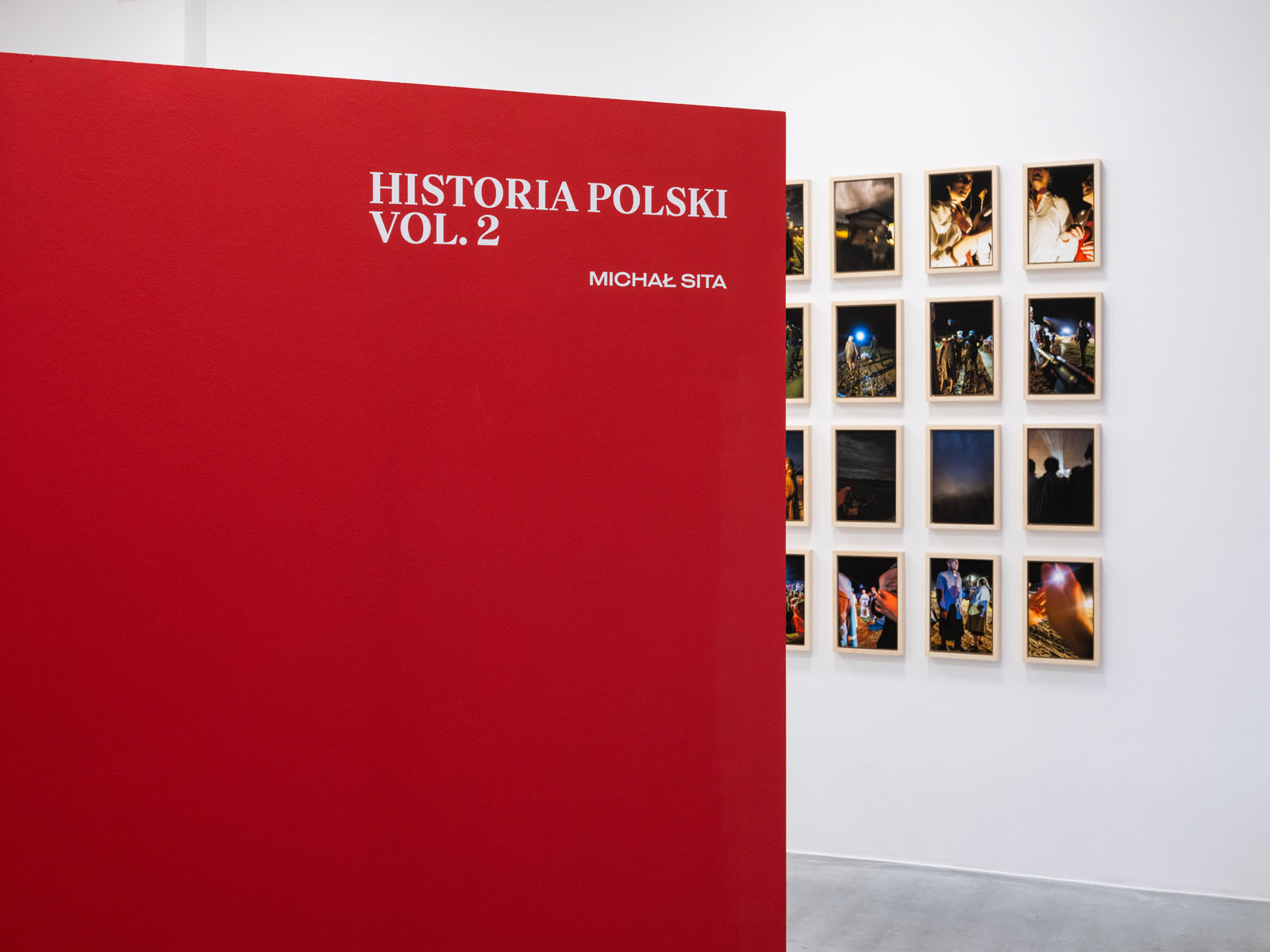
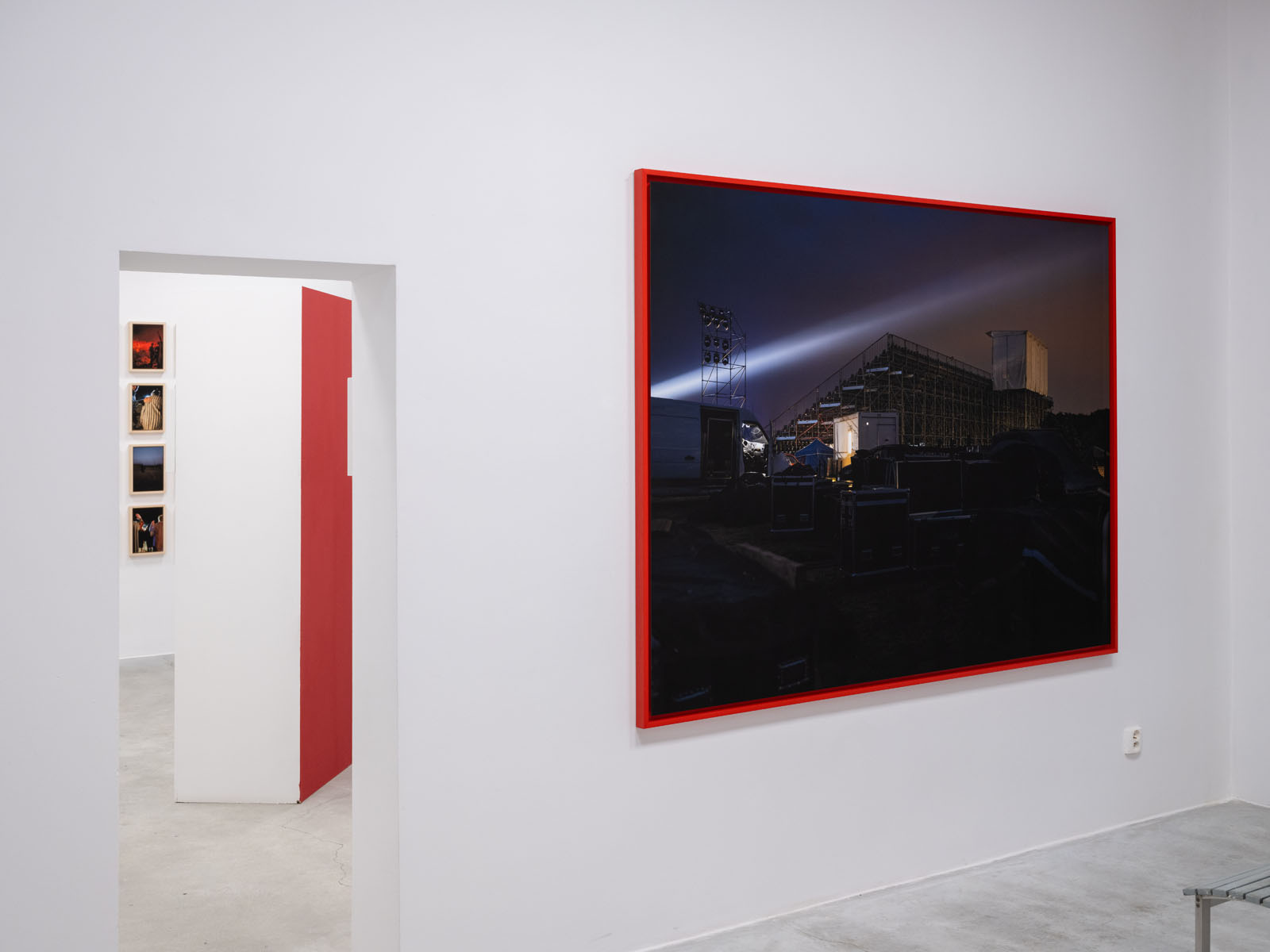



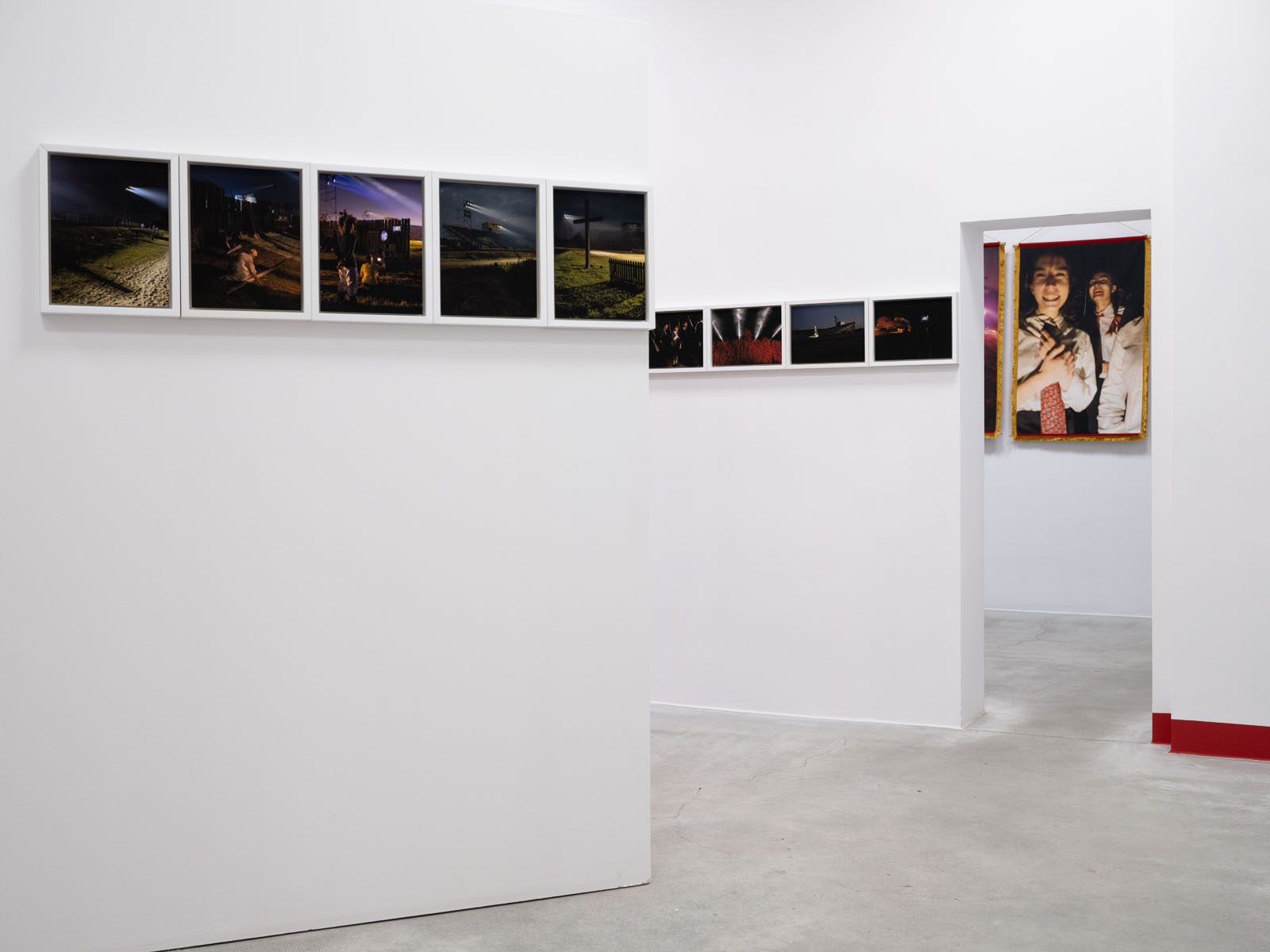
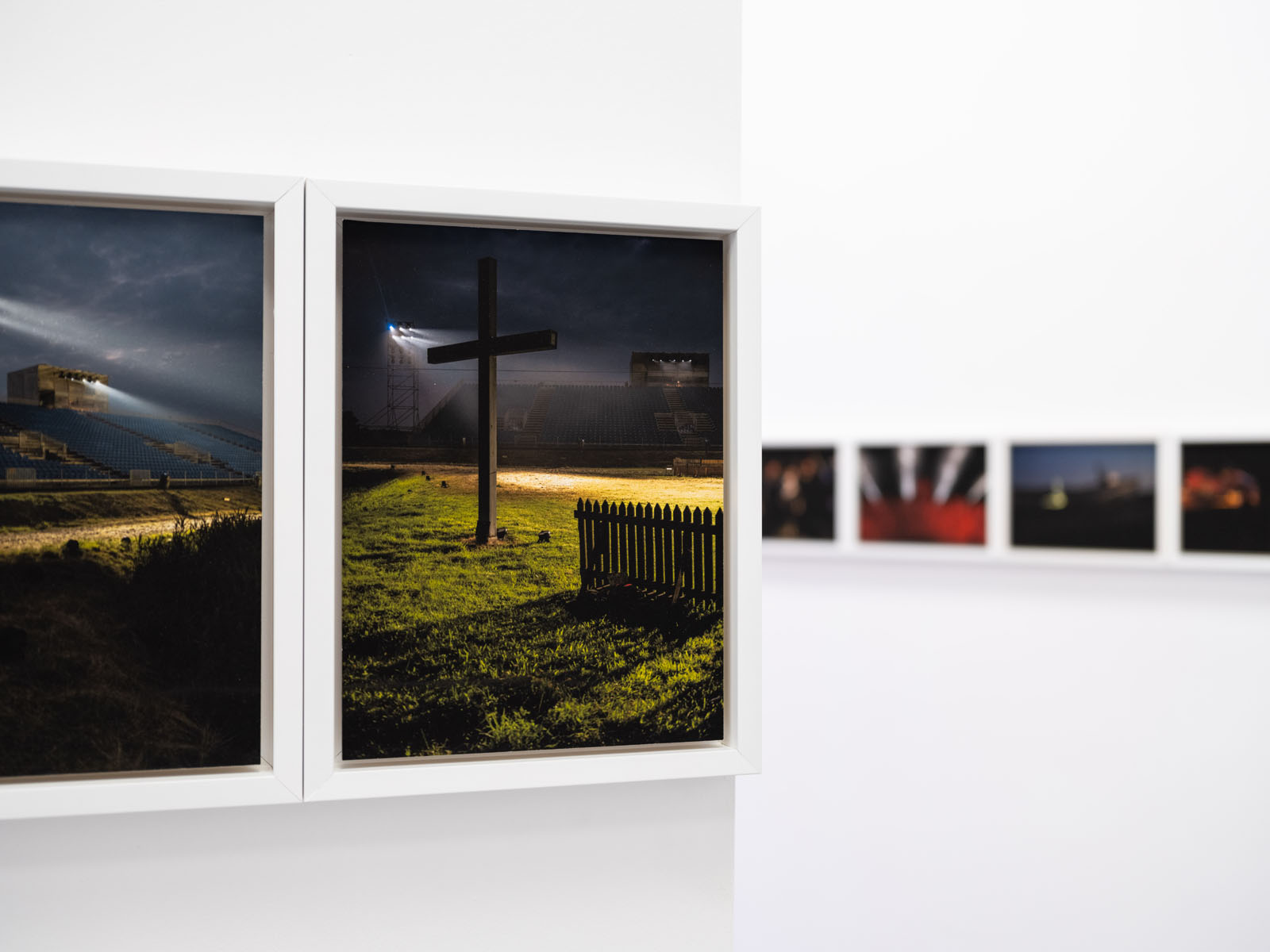






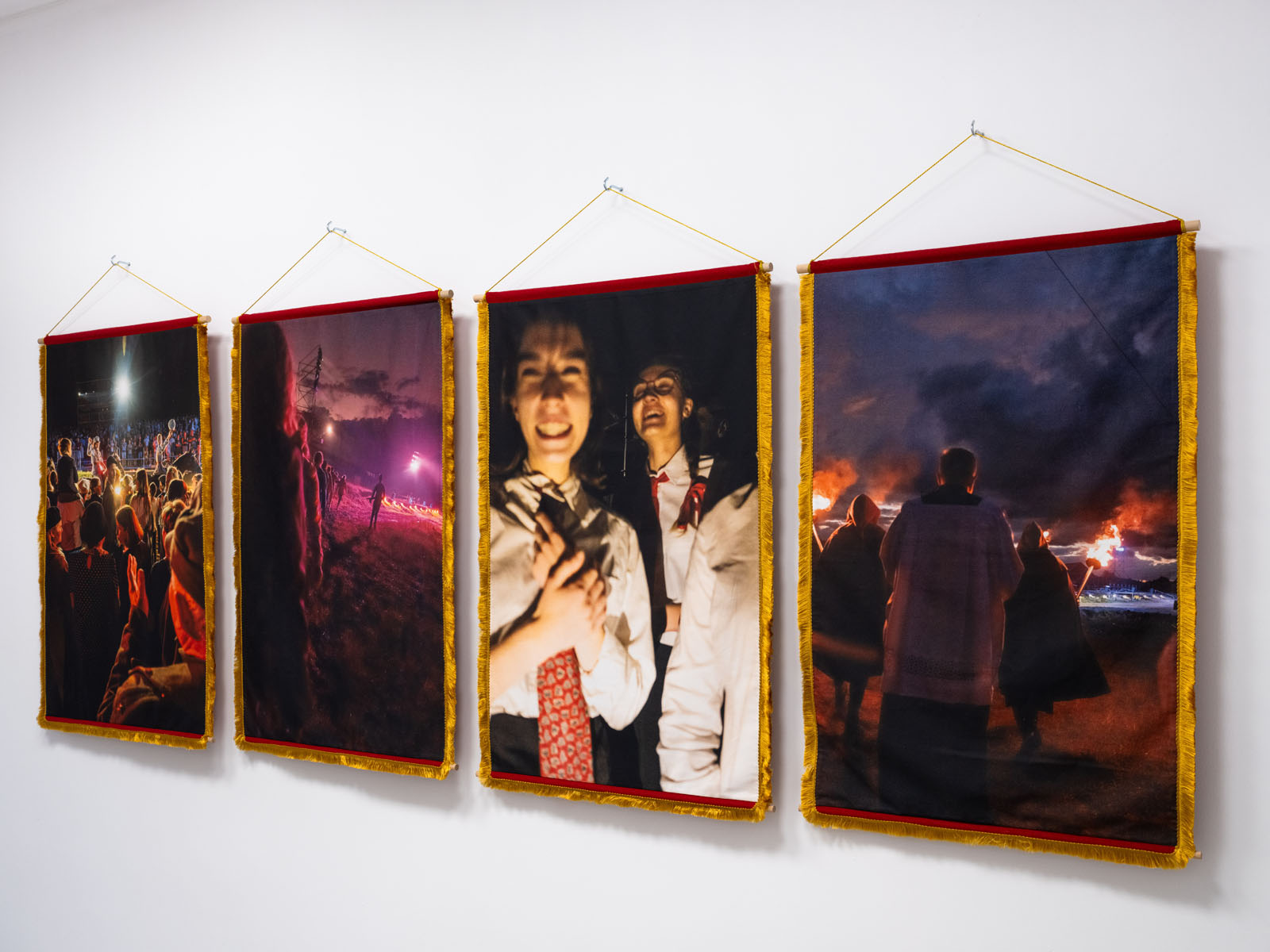





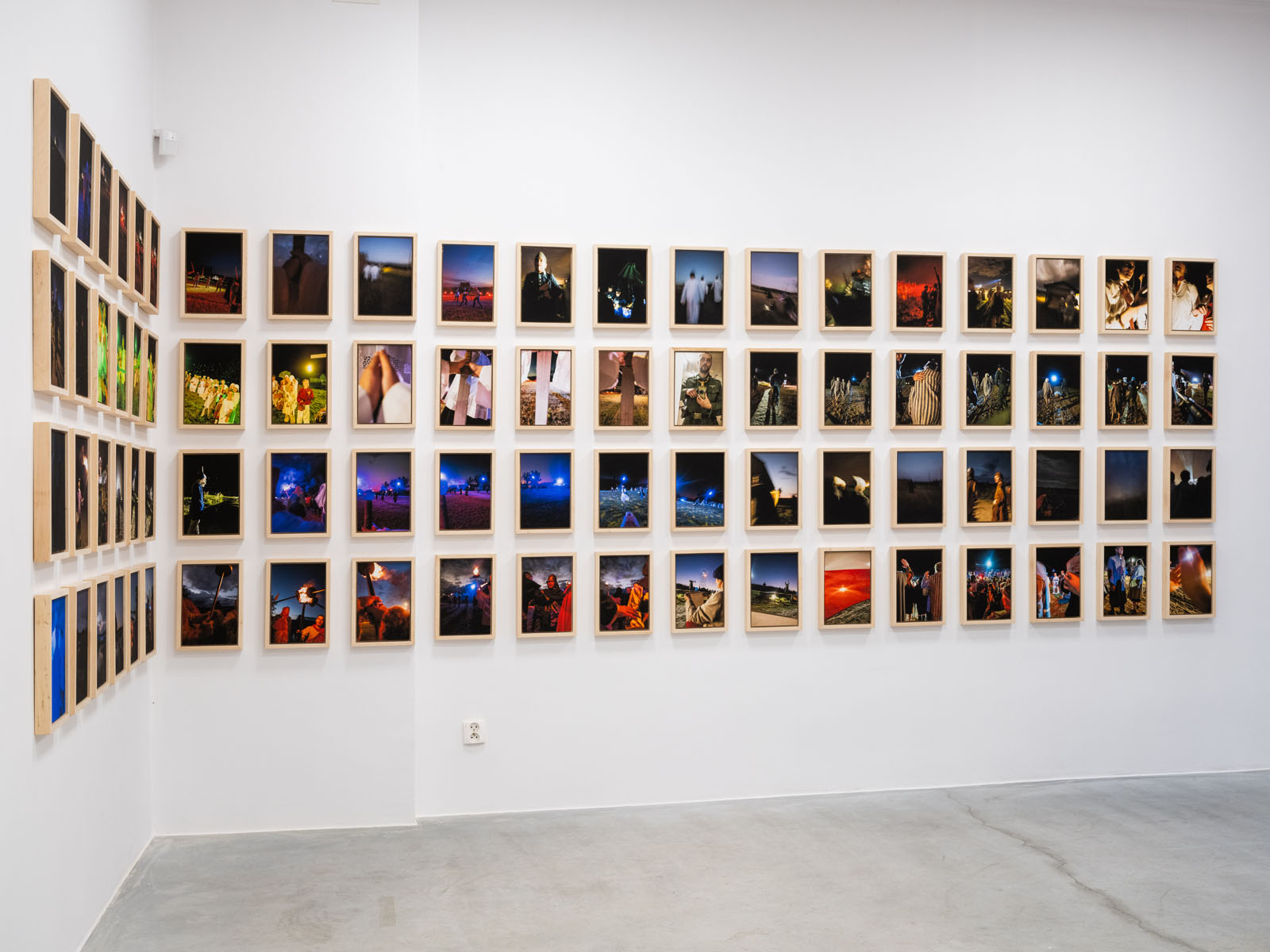







View of the exhibition at the Miejsce przy Miejscu 14 Gallery in Wrocław, Poland. 21.09 — 16.11.2023. Photographs and text: Michał Sita; curator: Łukasz Rusznica; graphic design: Agata Bartkowiak; pl. Strzelecki 14 | Wrocław. The exhibition was supported by the City of Wrocław and OPT Zamek; it was realized in cooperation with the Institute of Anthropology and Ethnology of the Adam Mickiewicz University, and with the financial support of the National Science Center and the Adam Mickiewicz University.

















In 2022, I changed my perspective, playing in the shows with a small automatic camera hanging around my neck during the performances. It was provisionally camouflaged to keep it out of sight of the audience, but it was clear to the other performers and the organizers of the show that I was taking pictures. They were also fully aware that this was part of the research and artistic activities I was carrying out. Every second, the camera (1) recorded the reality of the show from the standpoint of the actresses and actors, (2) recorded events from Polish history as seen through the eyes of their participants, and (3) commented on the way we choose to lend meaning to the past in participatory action.
Characters I have played in The Eagle and the Cross
- Warrior of Rus carrying a torch to the meeting with Lech and Czech, scene: the Brothers’ Encounter;
- Warrior of Mieszko I receiving baptism, 966, scene: Baptism of Poland;
- Bolesław the Brave’s knight taking part in the killing of Bishop Stanisław, 1079, scene: the King’s Madness;
- Priest celebrating Midnight Mass and blessing Easter baskets, scene: winter, from the Four Seasons series;
- Russian soldier dragging Rejtan on the ground, 1773, scene: the Partitions;
- An Auschwitz prisoner and a Nazi soldier herding prisoners to Auschwitz, scene: the Second World War.






History of Poland vol. 2
photos and texts: Michał Sita
curator: Łukasz Rusznica
photo sequence: Łukasz Rusznica and Michał Sita
graphic design: Agata Bartkowiak
pre-press: Krzysztof Krzysztofiak
Polish version proofreading: Justyna Knieć
English version translation: Agata Lewandowska
publisher: Sun Archive Books
circulation: 200 Polish-language copies, 100 English-language copies
typeset with the typefaces Brigada 1918 and Lazarus
Issued in cooperation with the Institute of Anthropology and Ethnology AMU. The research of which it is a part is funded by the National Science Center and AMU.
published in 2024
The book is distributed by the Sun Archive.